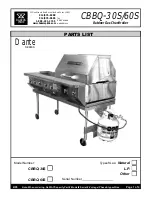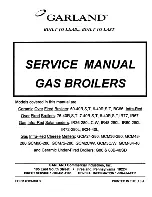
9
I
MPORTANT
!
For all flue systems, a restrictor must
always be inserted into the boiler’s
flue connector; the restrictor must be
Ø 44 in diameter depending on the
length of piping indicated in T
ABLE
2.1.
F
IG
2.9
and
F
IG
2.10
illustrate some of
the various designs for coaxial or twin
pipe flue systems.
For fur ther infor mation on
discharge/ventilation accessories, see
the
F
LUE
P
IPE
A
CCESSORIES
M
ANUAL
.
C
OAXIAL
S
YSTEMS
F
IG
. 2.9
In cold or humid weather water vapour may condense on leaving the flue terminal.
The effect of such “steaming” must be considered.
If the terminal is less than 2 metres above a balcony, above ground or above a flat
roof to which people have access, then a suitable terminal guard must be fitted.
When ordering a terminal guard, quote the appliance model number.
A suitable terminal guard is available from:
TOWER FLUE COMPONENTS
Morley Road
Tonbridge
Kent TN9 1RA
The minimum acceptable spacing from the terminal to obstructions and ventilation
openings are specified in
F
IG
. 2.5
.
Ø 60/100 mm
F
IG
. 2.6
The boiler is designed to be connected to a coaxial flue discharge system.
T
ERMINAL
P
OSITION
mm
A -
Directly above or below an openable window
or other opening
300
B -
Below gutters, solid pipes or drain pipes
75
C -
Below eaves
200
D -
Below balconies or car-port roof
200
E -
From vertical drain pipes and soil pipes
150
F -
From internal or external corners
300
G -
Above ground or balcony level
300
H -
From a surface facing a terminal
600
I -
From a terminal facing a terminal
1200
J -
From an opening in the car port
(e.g. door, window) into dwelling
1200
K -
Vertically from a terminal in the same wall
1500
L -
Horizontally from a terminal in the same wall
300
M -
Horizontally from an opening window
300
N -
Fixed by vertical flue terminal
F
IG
. 2.5
Summary of Contents for microSYSTEM 10 RFFI
Page 11: ...FIG 2 13 11 FIG 2 12...






































